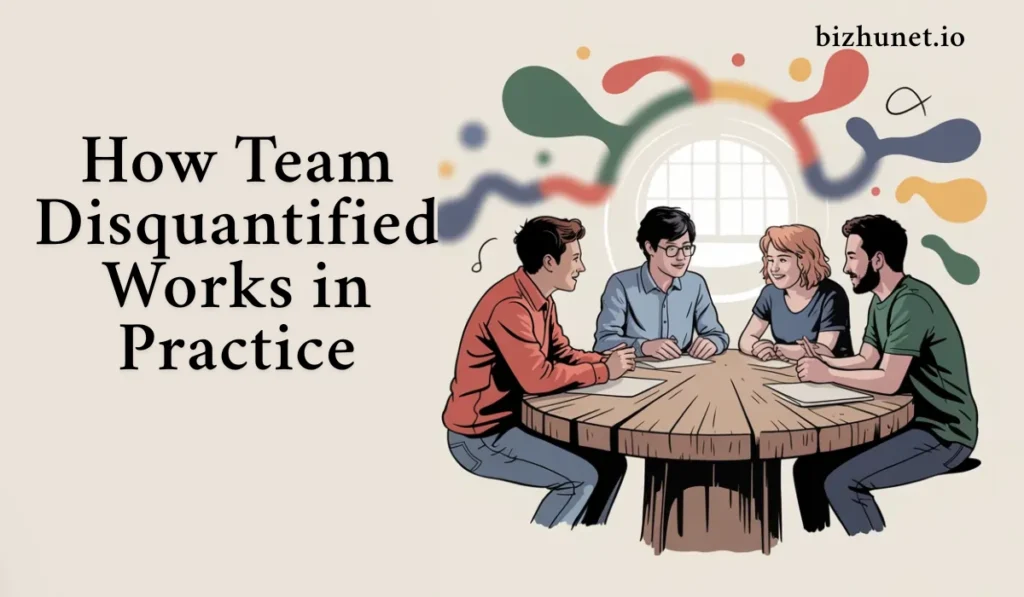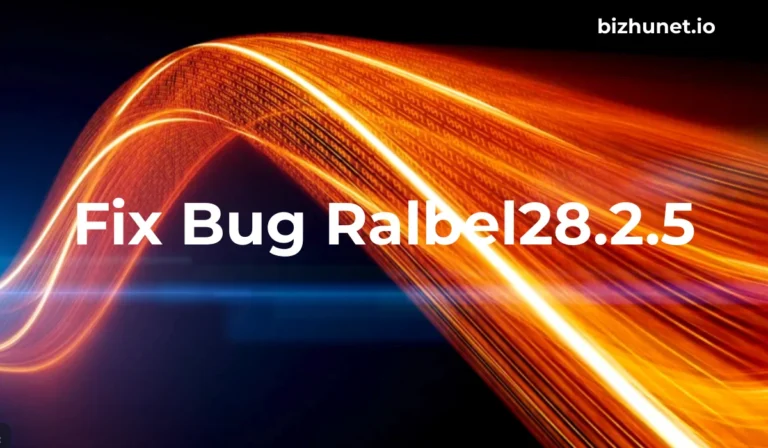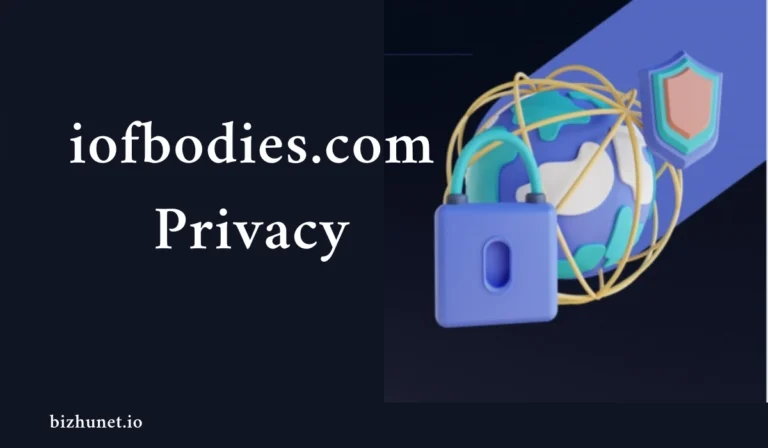Team Disquantified: Smarter Way to Build Future-Ready Teams
In today’s fast-changing work environment, traditional team structures often slow progress. Old methods focus on job titles, hierarchy, and fixed departments. But modern companies now need teams that are flexible, fast, and skill-driven. That’s where the concept of Team Disquantified comes in. This new approach is changing how businesses form teams and get work done. It values skill over seniority and allows organizations to move quickly in any market.
What Is Team Disquantified?
Team disquantified is a modern model where teams are built around skills, not job ranks. Instead of relying on fixed departments or roles, companies look at what each person can do best. Teams are then formed based on the project needs, and not by traditional job titles.
This method helps companies work faster and smarter. It also allows people to shine in new ways. Everyone gets the chance to lead, contribute, and grow based on ability—not just position. This makes teamwork more balanced and goal-focused.
Why Team Disquantified Is Gaining Popularity
The business world is now more complex. Companies need to act quickly. Old office styles no longer fit today’s needs. Team disquantified offers a smarter way to work. It gives room for creative problem-solving and flexible decision-making.
In this model, team members shift roles as projects change. A person may lead one project and support another. This kind of freedom removes office politics and helps talent rise naturally. The results are faster projects and happier employees.
Read more: Zryly com internet
Core Differences Between Traditional Teams and Team Disquantified
Understanding how it works becomes easier when compared with older models. Here’s a table to highlight the key changes:
| Area | Traditional Team | Team Disquantified |
|---|---|---|
| Structure | Fixed departments | Flexible and task-based |
| Leadership | Based on position | Based on skill and expertise |
| Team Roles | Predefined roles | Dynamic roles per project |
| Decision Making | Top-down | Shared, collaborative |
| Evaluation Style | Output numbers | Outcome and team feedback |
This approach helps companies make better use of all their resources.
How Team Disquantified Works in Practice

Let’s imagine a digital company building a new app. Instead of pulling people only from the “app team,” the company looks across all staff. They check who knows coding, who designs well, and who manages projects. Then, they form a new team just for this task.
Once the project ends, the team splits and joins other jobs. Team disquantified makes this smooth by tracking skills and roles clearly. This reduces delays and increases success.
Real Benefits of Team Disquantified for Businesses
Many companies using team disquantified report strong gains. They say it helps improve speed, staff satisfaction, and project outcomes. Let’s look at some actual results:
| Benefit | Performance Increase |
|---|---|
| Employee Skill Usage | 40% higher |
| Project Delivery Speed | 35% faster |
| Staff Engagement | 28% better |
| Talent Retention | 25% higher |
These numbers show that this model doesn’t just sound good—it works in real life.
Leadership in Team Disquantified Models
In a team disquantified structure, leadership is not fixed. Whoever has the right skills for the job leads the project. This helps in better decision-making and smoother team operations. Good leadership is about clear goals, active listening, and respect. This kind of leadership boosts team trust and performance.
Also, the chance to lead keeps employees motivated. It gives them a sense of ownership and pride. Leaders change depending on the task, which prevents power struggles and builds trust among coworkers.
Digital Tools That Support Team Disquantified
Technology plays a big part in making team disquantified possible. Many tools help track skills, assign tasks, and manage workflow. Apps like Trello, Slack, or Asana support teamwork across roles and departments.
Companies also use cloud platforms to store shared files and dashboards. These tools keep all members updated and allow feedback in real-time. With the help of technology, this model becomes easier to run and scale.
Team Disquantified: Employee Experience
This modern team setup benefits workers too. Employees get more chances to learn and grow. They are not stuck in one role. Instead, they try new things and take on fresh challenges. This helps them develop new skills and find the type of work they enjoy most.
People in team disquantified systems often say they feel heard and respected. Their ideas matter. Their effort counts. And their growth is a real part of the team plan.
Common Myths About Team Disquantified
Some people think that team disquantified means chaos. But that’s not true. It’s actually a smart and organized system. The change is in how structure is applied—not that structure is removed.
Another myth is that no one leads. In fact, many people lead at different times. It depends on who fits the task best. Lastly, some think it’s just for startups. But big companies like Google and Deloitte also use similar models.
Challenges and Solutions
No system is perfect. It has its challenges. Some staff miss traditional roles. Others may need time to adjust to flexible structures. However, with good communication and training, these hurdles can be overcome.
| Challenge | Suggested Solution |
|---|---|
| Fear of Change | Offer open talks and support |
| Skill Gaps in Leaders | Provide coaching and training |
| Tracking Performance | Use both feedback and data |
| Coordination | Use digital planning tools |
When done right, the benefits of this model greatly outweigh the costs.
The Future of Team Disquantified
More companies are exploring team disquantified each year. This method fits well with remote work, AI tools, and flexible office models. As work becomes more global and fast-paced, teams must adjust quickly. It helps organizations stay ahead.
We also expect AI to play a role by matching skills to tasks even faster. Feedback tools will improve, helping teams stay aligned. This new system is built for the future.
Use Across Different Industries
It works in many types of companies. Tech startups, creative agencies, marketing firms, and consulting groups all benefit from it. It is also used in education, research, and even healthcare.
Any place where work changes often and teamwork matters can use this approach to improve results.
Read more: Wolfcontactsshops com
How to Start Using Team Disquantified
If you’re ready to start, begin by writing down the skills of your team. Use simple tools to track who can do what. When a new project starts, form a team based on skills. Give everyone a clear role. Let the most skilled lead.
Then, watch how people respond. Ask for feedback often. Train your team to accept flexible roles and shared leadership. Slowly, your company will move into a team disquantified model naturally.
Frequently Asked Questions
What does team disquantified mean?
It means building teams based on skills and tasks, not job titles or hierarchy.
Can any company use team disquantified?
Yes, businesses of all sizes and industries can apply this model.
Is it hard to manage flexible teams?
Not if you use tools, clear roles, and keep giving feedback often.
Will it replace traditional teams?
Maybe not fully, but it will become a key part of modern work culture.
Conclusion
Team disquantified is not just a trend. It’s a new way of working that matches the speed and demands of today’s world. It helps people do what they do best and brings better results for companies. When talent, tools, and teamwork come together, great things happen.
If you want to future-proof your business and build teams that truly work, it’s time to go beyond titles and start focusing on talent. That’s the power of team disquantified.






